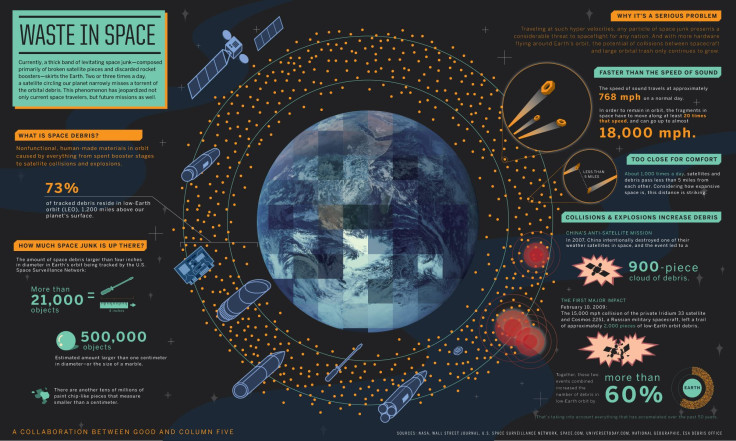WT1190F Live Stream: Watch The Mysterious Friday The 13th Object Hit Earth Here

A bit of space history is returning to Earth early Friday morning. Labeled WT1190F, the object is a hollow piece of space trash that is expected to burn up over Sri Lanka. WT1190F provides a unusual opportunity for scientists to study how an object interacts with Earth. Slooh, the international organization of robotic telescopes, will provide a WT1190F live stream beginning at 5 a.m. PST (8 a.m. EST).
The object was first spotted in 2013, but sported the rather generic designations of UDA34A3 and UW8551D. Remove the numbers, and WT1190F becomes a funny acronym ready for headlines around the world. The Catalina Sky Survey discovered the object in 2013 and spotted the object again on Oct. 15. The object is traveling in a highly eccentric orbit that sent it beyond the moon. But by observation, astronomers were able to map out its trajectory.
A few hours ago I imaged tomorrow's artificial impactor #WT1190F with the SSO MPC G68 0.61-m telescope @SSON_Chat pic.twitter.com/RfrO8zlx91
— Dr Marco Langbroek (@Marco_Langbroek) November 12, 2015"This density is in fact compatible with the object being a hollow shell, such as the spent upper stage of a rocket body or part of a stage," Detlef Koschny, head of the Near-Earth Object activities at the European Space Agency’s Space Situational Awareness program office, said in a statement. The object, about 6.5 feet long, is re-entering Earth at a steep angle with most of it expected to burn up in the atmosphere. Astronomers say the re-entry poses no threat to Earth, but the government of Sri Lanka asked residents to cease fishing off the southern coast due to WT1190F.
Much like the spooky Halloween asteroid, WT1190F gives researchers a rare opportunity to study a man-made object's return to Earth. Because of its similar behavior to other NEO, the WT1190F observations will prove useful for improving asteroid prediction models. "It provides an ideal opportunity to test our readiness for any possible future atmospheric entry events involving an asteroid, since the components of this scenario, from discovery to impact, are all very similar," Tim Flohrer, from ESA’s Space Debris Office at the ESOC operations center, said in a statement.
Slooh's broadcast will include a discussion with physicist Mark Boslough along with views of the skies over Sri Lanka. You can view the WT1190F live stream beginning at 5 a.m. PST (8 a.m. EST) below.
© Copyright IBTimes 2024. All rights reserved.












